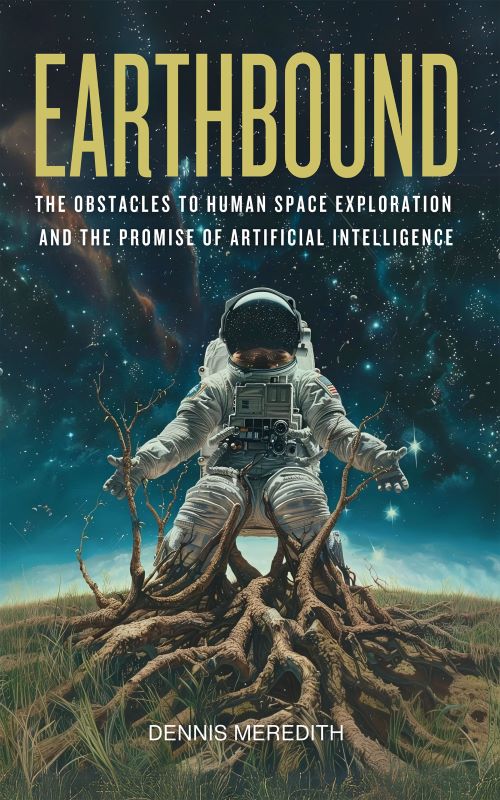Cosmic cheerleaders drive the human space program, despite lethal hazards, says new book
NASA and a cadre of self-serving cosmic cheerleaders are key to promoting the human space program, despite voluminous scientific evidence that deep space is a lethal environment, and that the public does not support deep-space missions. This, according to the new book Earthbound: The Obstacles to Human Space Exploration and the Promise of Artificial Intelligence. These groups include self-serving politicians, profit-seeking aerospace corporations, billionaires with space visions, and naïve space travel enthusiasts.

NASA’s emphasis on human space exploration arises from its own calculation of political benefit, wrote Meredith: “NASA’s prioritizing of human spaceflight—to which it devotes almost half its annual budget—reflects a somewhat cynical adage coined decades ago: ‘No Buck Rogers, no bucks.’”
However, NASA has recognized the severe, unsolved “Red Risks” of human space travel, including the health effects of space radiation, vision problems, behavioral health and performance decline, and inadequate food and nutrition. And, researchers have conceded that they cannot reliably estimate the medical risk of deep-space missions.
What’s more, wrote author and veteran science writer Dennis Meredith, “In trying to understand space travel’s biological effects, scientists are trapped in a cosmic catch-22. They cannot be sure that humans can survive in deep space until humans are sent on deep-space missions. But they cannot confidently send humans on deep-space missions until they know that they can survive.”
Earthbound covers a multitude of scientific studies revealing that any organ—heart, lungs, immune system, brain, or eyes—could fail due to radiation or weightlessness.
Even as cosmic cheerleaders promote human deep-space travel, the public offers little support for it, wrote Meredith. He cites one survey which found that very low percentages of respondents believed that human moon (12%) or Mars (11%) missions should be a top priority. And, a large percentage agreed that moon (41%) or Mars (43%) missions are not important or should not be done at all.
The inspirational, economic, and other rationalizations for human deep-space exploration are deeply flawed, wrote Meredith.
"They are generally vague, hand-waving arguments; and when their merits are closely examined, they lack substance. One might compare them to hollow chocolate Easter Bunnies—appetizing on the outside, but with nothing on the inside."
For example, advocates assert that human spaceflight inspires students to become scientists or engineers. However, a report on human spaceflight by the National Research Council cast doubt on this rationale, concluding that: “The path to becoming a scientist or engineer requires much more than the initial inspiration.” Of such inspiration, the report noted that “it is difficult to separate the contributions of human and robotic spaceflight.”
Advocates have also claimed that spinoffs from the human space program have proved its worth. One questions, however, whether these technologies would have been more cost-efficiently developed by robust funding of basic and applied research, without the massive overhead of a space program. And, the NRC report pointed out “. . . even if NASA’s human spaceflight activities have had a substantial favorable effect on US technical, industrial, and innovative capabilities, it is difficult or impossible to ascertain whether similar effects could have resulted from similarly large R&D investment by other federal agencies.”
They have also pointed to the jobs created. But so would the same amount of money expended on infrastructure, environmental restoration, basic research, and countless other endeavors in which the product was not literally shot into space.
Instead of a human space program, Earthbound advocates that deep-space exploration be mounted by neuronauts—artificially intelligent space probes collaborating with scientists.
Wrote Meredith, “using robots, humans can adventure into deep space and explore the planets, moons, and asteroids safely, and reap an enormous wealth of knowledge. . . . This realistic deep-space program avoids the pipe-dream-planning and rush to space driven by the self-interest of the cosmic cheerleaders. Rather, it proceeds rationally, building a foundation of knowledge that will create the most benefit from space for humankind.
“Imagine the prodigious exploration possible if the immense cost of the human space program were applied to robotic explorations,” wrote Meredith. “And imagine how inspiring and educational those explorations would be if the world’s peoples could join the experience through virtual reality and telepresence technologies.”